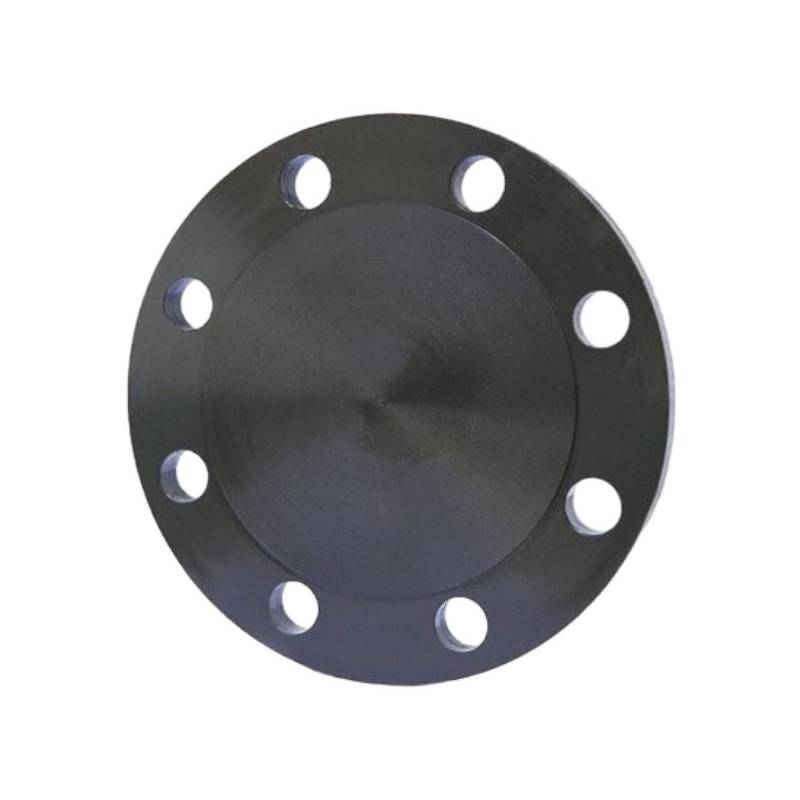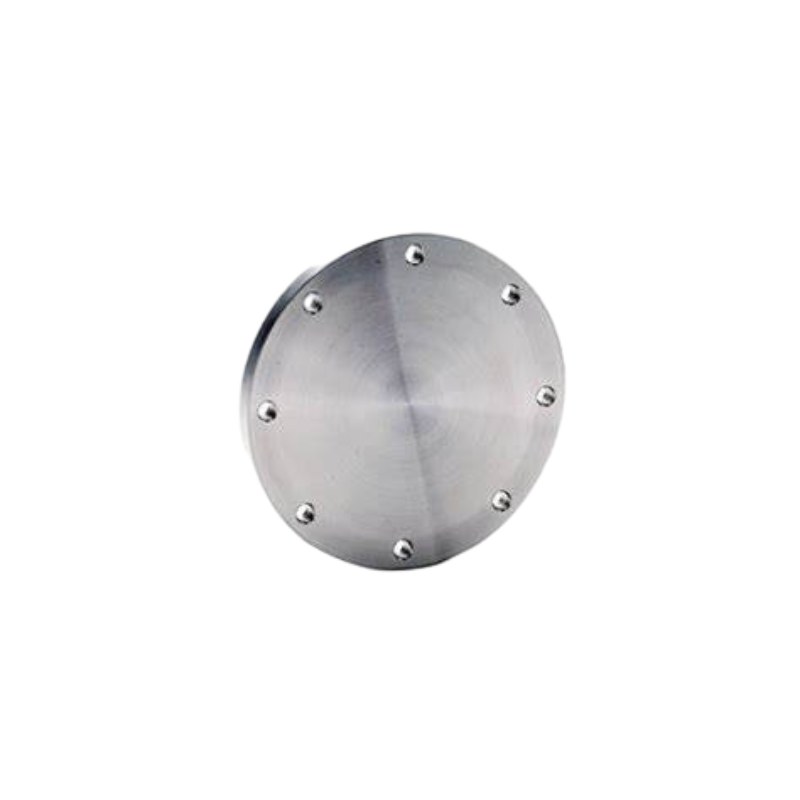-
Diseño robusto: La brida ciega GOST 12836-67 presenta una placa circular plana con orificios para pernos espaciados uniformemente alrededor del perímetro. Este diseño permite una fácil alineación y atornillado a la brida de acoplamiento, lo que proporciona una solución de cierre robusta y estable para sistemas de tuberías.
-
Sellado seguro: Cuando se instala al final de una tubería, la cara plana de la brida ciega GOST 12836-67 crea un sello hermético, evitando fugas de fluido y manteniendo la integridad del sistema de tuberías. Esta capacidad de sellado seguro garantiza un rendimiento y seguridad óptimos, incluso en condiciones operativas extremas.
-
Aplicación versátil: Desde refinerías de petróleo y gas hasta plantas de procesamiento de productos químicos y redes de distribución de agua, las bridas ciegas GOST 12836-67 encuentran aplicaciones versátiles en diversas industrias. Ya sea que se utilicen con fines de aislamiento, pruebas de presión o cierres temporales, estas bridas ofrecen confiabilidad y durabilidad en sistemas de tuberías críticos.
-
Construcción duradera: Fabricadas con materiales de alta calidad, como acero al carbono, acero inoxidable o acero aleado, las bridas ciegas GOST 12836-67 exhiben una resistencia y durabilidad excepcionales. Están diseñados para soportar duras condiciones operativas, incluidos entornos corrosivos, altas temperaturas y presión intensa, lo que garantiza rendimiento y confiabilidad a largo plazo.
-
Ingeniería de precisión: Las bridas ciegas GOST 12836-67 se someten a procesos de ingeniería y mecanizado de precisión para cumplir con estrictas tolerancias dimensionales y requisitos de acabado superficial. Esta precisión garantiza la compatibilidad y la intercambiabilidad con otras bridas estándar, lo que facilita una integración perfecta en los sistemas de tuberías y minimiza el riesgo de fugas o fallas.
-
Facilidad de instalación: La instalación de bridas ciegas GOST 12836-67 es eficiente y sencilla, y requiere una alineación y un atornillado simples al extremo de la tubería. Sus dimensiones y diseño estandarizados facilitan la fácil integración en las redes de tuberías existentes, minimizando el tiempo de instalación y los costos de mano de obra.
Características clave:
- Diseño robusto para un cierre seguro
- Sellado seguro con diseño de cara plana
- Aplicación versátil en todas las industrias
- Construcción duradera para un rendimiento a largo plazo
- Ingeniería de precisión para tolerancias estrictas
- Facilidad de instalación con alineación y atornillado simples
Material Selection for GOST 12836-67 Blind Flanges: What You Need to Know
When it comes to GOST 12836-67 blind flanges, selecting the appropriate material is crucial for ensuring functionality, safety, and longevity in various applications. GOST standards, established by the Euro-Asian Council for Standardization, Metrology and Certification, guide the specification of materials to maintain the integrity of piping systems.
Key Considerations for Material Selection:
1. Corrosion Resistance: One of the primary factors in choosing a material for GOST blind flanges is its ability to resist corrosion. Stainless steel (such as 304, and 316) is a popular choice due to its excellent resistance to oxidizing environments. For applications involving aggressive chemicals, alloys like Inconel or Monel are often considered.
2. Pressure and Temperature Rating: GOST blind flanges need to be rated for the specific pressure and temperature conditions they will face. Material selection must align with the service conditions to avoid failure. For high-pressure applications, carbon steel flanges can be suitable, provided they are properly treated or coated.
3. Weldability and Machinability: Depending on installation requirements, the selected material should offer appropriate weldability and machinability. If modifications or on-site fabrication are necessary, choosing materials that can be easily welded is essential.
4. Standards Compliance: Ensure that the materials selected comply with all relevant GOST standards. This not only guarantees quality but also maintains compatibility within the piping system.
5. Cost-effectiveness: While material selection should prioritize performance and safety, cost considerations also play a significant role, especially in large-scale projects. Finding a balance between budget and quality is essential.
Differences Between GOST 12836-67 Blind Flange and Other Flange Standards
When comparing the GOST 12836-67 blind flange with other flange standards, several key differences emerge that reflect the unique characteristics and applications of the Russian standard. The GOST (Gosudarstvennyy Standart) system is a set of regulations and guidelines that govern various industrial products, including blind flanges, which are used to seal off piping systems.
One of the primary differences lies in the dimension and pressure rating classifications. GOST 12836-67 blind flanges are specifically designed according to Russian specifications, with dimensions that may differ significantly from those outlined in ANSI, ASME, or ISO standards. For instance, while ANSI/ASME flanges are typically categorized into nominal pipe sizes (NPS) and pressure classes, GOST flanges feature a unique set of sizes and pressure ratings, making it essential for engineers to select the appropriate type based on regional standards.
Another notable difference is the material composition. The GOST standard emphasizes the use of specific materials that are suited for the harsh Russian climate and industrial requirements. While common materials such as carbon steel and stainless steel are also used in other standards, GOST may specify additional material grades to accommodate unique environmental challenges, including extreme temperatures and corrosive conditions.
Additionally, the manufacturing and testing processes for GOST 12836-67 blind flanges are subject to local industry regulations, which might include stricter quality assurance protocols compared to other international standards. This ensures that the flanges not only meet dimensional specifications but also effectively withstand the pressures and temperatures expected in typical applications within Russia.
In summary, while GOST 12836-67 blind flanges share similarities with other flange standards, their unique dimensions, material requirements, and quality assurance processes set them apart. Understanding these differences is crucial for engineers and designers when selecting flanges for specific applications in diverse geographical locations.


















